WHY SHOULD YOU CARE?
“Are we there yet?” For HR professionals navigating the ever-changing landscape of modern business, this age-old question takes on a profound new meaning. In a world where automation, AI, remote work, economic uncertainty, and global challenges are reshaping the workplace, HR finds itself at a transformative crossroads. This article explores the paradigm shift within HR, championed by thought leaders like Dave Ulrich, emphasizing the need to transition to an “outside-in” approach. Join us on a journey that reveals the strategic realignment of HR, positioning it as a pivotal force in driving organizational success amidst continual change.
In today’s fast-paced business world, HR is at a crossroads. Gone are the days when HR’s focus was solely internal. Now, with the rise of AI, remote work, and ongoing global challenges, HR leaders are tasked with a transformative role. They must balance the internal management of employees with external factors like technological innovation and global market trends. This balancing act is crucial for businesses to remain agile and competitive.
Artificial intelligence and automation are revolutionizing the workplace. HR leaders must guide this transformation, ensuring employees and HR Leaders alike are prepared for new, tech-driven roles. Generative AI is no longer a futuristic concept; it’s a present reality shaping the HR domain in profound ways.
The shift to remote and hybrid work models, accelerated by the pandemic, has further challenged traditional HR practices. HR must now manage a distributed workforce, maintaining engagement and a sense of belonging across physical distances. This new era of work requires innovative strategies to keep teams connected and productive.
Economic and geopolitical uncertainties add to the complexity. HR strategies must be resilient and adaptable, aligning with both internal goals and the ever-changing external environment. This is where Dave Ulrich’s “outside-in” approach becomes pivotal.
In this new landscape, HR’s role expands beyond traditional boundaries Ulrich advocates for HR strategies that not only address internal needs but also resonate with external stakeholders like customers and investors. Ulrich champions an “outside-in” approach in HR strategies, emphasizing the need to align internal processes with the demands and expectations of external stakeholders, including customers, investors, and the broader community. This shift from an inward focus on employee management and organizational needs to a broader stakeholder-centric perspective is essential in the age of automation, AI, and remote work.
In the realm of talent management from an external perspective, the message is clear: our people are the most valuable asset for our customers. To put this into action, organizations can engage their customers or investors in the process of selecting, developing, and rewarding talent. For instance, some companies, like airlines, offer key customers coupons to acknowledge outstanding employee service. Additionally, HR professionals can actively participate in sales calls with important customers to understand their preferences and then use these insights to shape HR strategies. Furthermore, targeted customers, investors, or community leaders can collaboratively design and attend training programs to ensure the content aligns with their specific needs.
Shifting the focus to leadership, the goal is to establish a leadership brand that reflects the organization’s commitments to its customers. To achieve this, organizations should identify leader competencies—such as behaviors, skills, and expectations—that align with the firm’s brand identity in the market. Similar to how a firm’s brand sets it apart from competitors, leadership competencies should differentiate leaders. This can be further reinforced by involving customers, investors, or community leaders in comprehensive leadership assessments beyond the traditional 360-degree evaluations. Additionally, monitoring the organization’s price-to-earnings ratio compared to competitors can gauge investor confidence in its leadership.
When considering the organization’s culture from an external standpoint, it’s essential to recognize that culture is how the firm is perceived by its best customers and how this perception is translated into employee experiences. To ensure alignment, organizations should compare their internal values with the promises made to customers and communities. This ensures that what is valued internally resonates with external expectations. Seeking input from customers or investors regarding the desired behaviors associated with these values can further enhance alignment. Additionally, engaging investors in conversations about the capabilities they would like the organization to be known for can boost their confidence in future earnings.
Finally, in the context of Human Resources, the focus is on creating value for all stakeholders, not just managing HR processes. This transformation involves clarifying HR’s role to ensure that its practices, policies, analytics, and people are oriented toward delivering value to both internal and external stakeholders. HR professionals must also possess a deep understanding of stakeholder expectations, and organizations can achieve this by inviting customers, investors, and community leaders to collaborate in shaping HR practices. This shift represents a fundamental change in HR’s purpose, emphasizing its role as a strategic contributor to overall stakeholder value.
Adopting Ulrich’s outside-in approach means HR leaders must not only adapt to technological changes but also anticipate and respond proactively to external market and societal shifts. It’s about creating a symbiotic relationship between internal HR practices and the external environment, ensuring that the organization remains agile, resilient, and aligned with broader stakeholder needs. This strategic realignment is crucial for organizations seeking to thrive in an era marked by continual change and uncertainty.
So, “Are we there yet?” – we are certainly on the way, but the journey continues!
If the topic is important to you, Join us as we delve into the dynamic world of HR Strategy and Transformation at The HR Congress WorldSummit in Porto on May 14-15.

Written by: Mihaly Nagy
HR Innovation HR Strategy Strategy & Transformation
Previous post

labelArticles today2024.01.18.
The Transformative Role of Generative AI in HR
WHY SHOULD YOU CARE? In today’s fast-paced business world, the integration of generative AI into HR practices is revolutionizing how we manage and understand our workforce. This article delves into [...]
Similar posts

labelArticles today2024.07.24.
AI-Powered HR: Strategic Benefits and Practical Applications

labelArticles today2024.06.24.









Post comments (0)